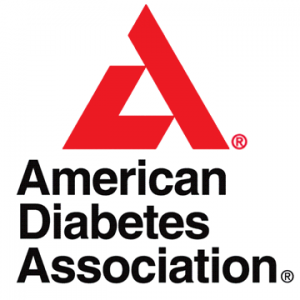Article
ADA Releases Annual Guidelines for CVD Management in Diabetic Patients
Author(s):
The guidelines list more than 40 recommendations related to blood pressure targets, screening and diagnosis, and overall cardiovascular disease risk management strategies.

The American Diabetes Association (ADA) has updated its annual guidance on cardiovascular disease risk management in patients with diabetes.
Treatment guidelines range from recommendations in screening and diagnosis to treatment goals and strategies.
Screening and Diagnosis
The ADA recommends that blood pressure should be measured at every routine clinical visit by a trained individual.
They noted that elevated blood pressure (≥140/ 90 mmHg) should be confirmed with multiple readings, including on separate days, to diagnose potential hypertension. Furthermore, any patients with hypertension should monitor their blood pressure at home.
“Home blood pressure self-monitoring and 24-h ambulatory blood pressure monitoring may provide evidence of white coat hypertension, masked hypertension, or other discrepancies between office and ‘true’ blood pressure,” the guidelines noted.
Continuous monitoring may also lead to increased medication adherence among patients, which can, in turn, reduce cardiovascular risk.
In terms of screening for cardiovascular disease, routine screening for coronary artery diseases (CAD) is not necessary in asymptomatic patients so long as atherosclerotic cardiovascular disease (ASCVD) risk factors are treated.
CAD should be investigated if patients present with atypical cardiac symptoms; signs or symptoms of associated vascular disease including carotid bruits, transient ischemic attack, stroke, claudication, or peripheral arterial disease; or electrocardiogram abnormalities.
Blood Pressure Goals
The ADA lists goals that at-risk diabetic patients should achieve in terms of blood pressure reduction.
For example, in patients with diabetes and hypertension, physicians should individualize blood pressure target through a shared decision-making process. These decisions should particularly be informed by cardiovascular risk, potential adverse effective of antihypertensive medications, and patient preferences.
Individuals with diabetes and higher cardiovascular risk—defined as existing ASCVD or 10-year ASCVD risk ≥15%—should strive to achieve a blood pressure target of <130/80 mmHg, if it is safe to do so.
Those with lower cardiovascular risk should aim to reach a blood pressure target of <140/90 mm Hg.
Pregnant patients with diabetes and pre-existing hypertension are recommended to reach a blood pressure target of 110-135/85 mmHg.
General Treatment Recommendations
The ADA guidelines also includes an extensive and systematic list of treatment recommendations for cardiovascular disease that account for various baseline patient characteristics and risk for (or presence of) hypertension.
In lowering risk of cardiovascular diseases, the guidelines emphasize the importance of combined lifestyle and pharmacological interventions.
Of course, the course of treatment depends on various factors, including initial blood pressure.
For example, the ADA guidelines recommend that in patients with confirmed hypertension and an initial blood pressure >140/90 mgHg and <160/100 mg, it is best to start treatment with 1 pharmacological agent, such as ACE inhibitor, Angiotensin II receptor blockers, or a diuretic (depending on other comorbid cardiovascular conditions), in addition to lifestyle management.
In those with a blood pressure ≥160/100 mg, a combination of 2 pharmacological agents (depending on comorbid conditions) and lifestyle management are recommended.
Physicians should then assess blood pressure control and adverse events and adjust accordingly. Agents can be swapped or added that can help patients reach their targets.
If targets cannot be achieved, then clinicians can consider addition of mineralocorticoid receptor antagonist. They may also refer patients to a specialist specialized in blood pressure management.
Recommendations cover wide ground, including prevention strategies in diabetic patients with and without ASCVD, treatment targeting LDL-C and glucose lowering, use of statins, and other combination and alternative therapies.
One notable recommendation encourages combination therapy with aspirin and low dose rivaroxaban in patients with stable coronary and/or peripheral artery disease. This therapeutic option can be used to prevent major adverse limb and cardiovascular complications.
This recommended strategy was based on encouraging findings from the Cardiovascular Outcomes for People Using Anticoagulation Strategies (COMPASS) and Rivaroxaban in Endovascular or Surgical Limb Revascularization for Peripheral Artery Disease (VOYAGER PAD) trials presented last year at the American College of Cardiology (ACC) Conference.
Nevertheless, the ADA encourages clinicians to discuss the risks and benefits of dual antiplatelet or antiplatelet plus anticoagulant treatment strategies in eligibile patients. Use of these strategies should be determined through shared decision-making.
Conclusions
These guidelines are intended to describe current clinical practice recommendations and offer clinicians tools to help evaluate quality of diabetes care.
“For prevention and management of both ASCVD and heart failure, cardiovascular risk factors should be systematically assessed at least annually in all patients with diabetes,” the ADA notes.
“These risk factors include obesity/overweight, hypertension, dysliidemia, smoking, a family history of premature coronary disease, chronic kidney disease, and the presence of albuminuria.”
Most of the evidence supporting these recommendations are informed by trials of patients with type 2 diabetes. There are few trials that have been designed with a specific purpose of assessing the impact of cardiovascular risk reduction strategies in patients with type 1 diabetes.




